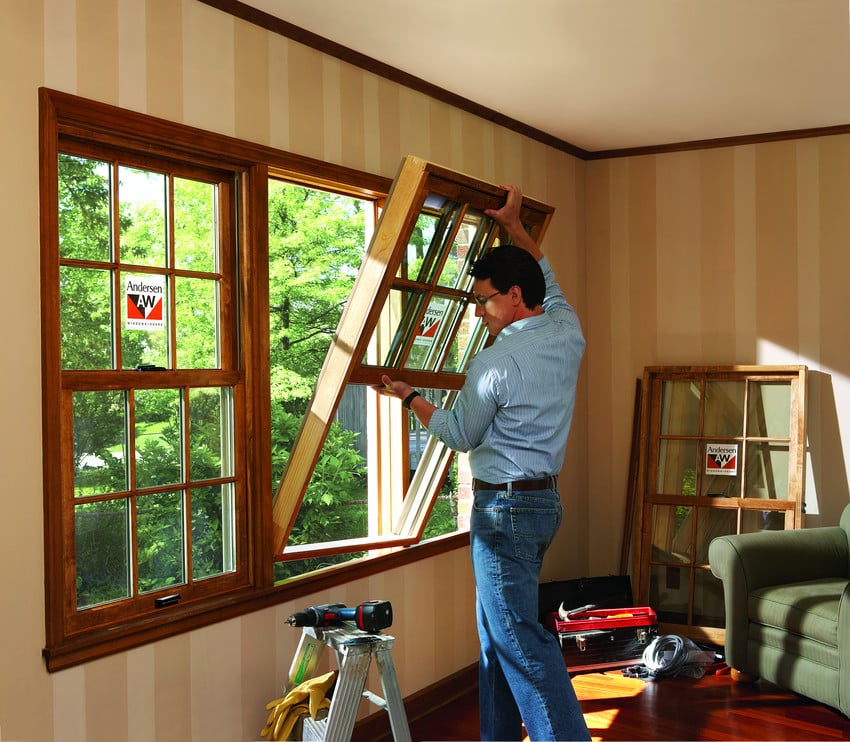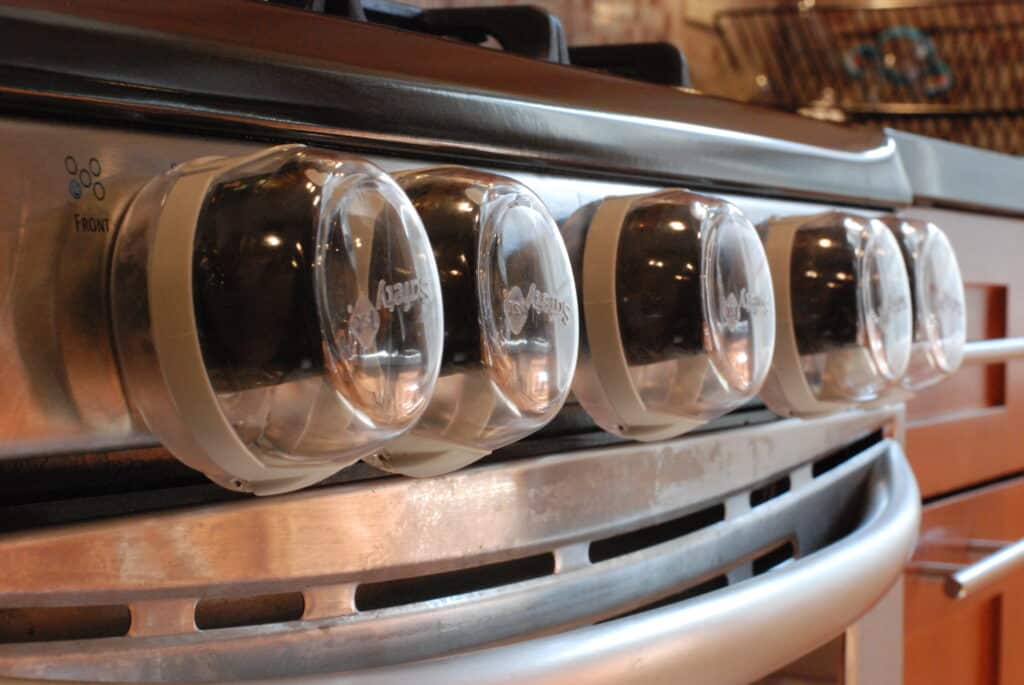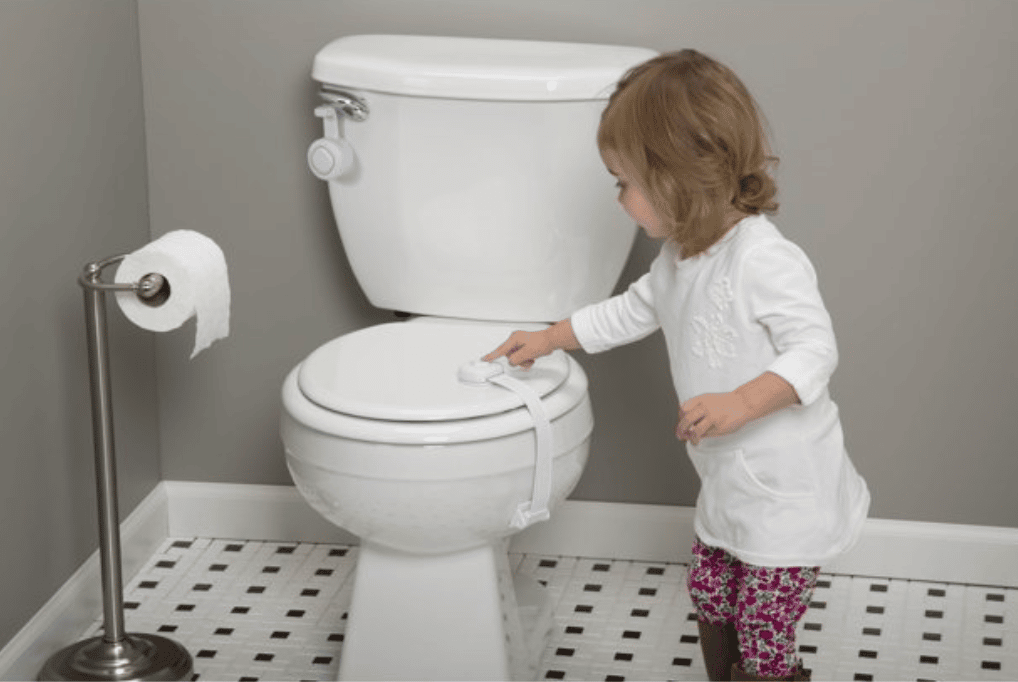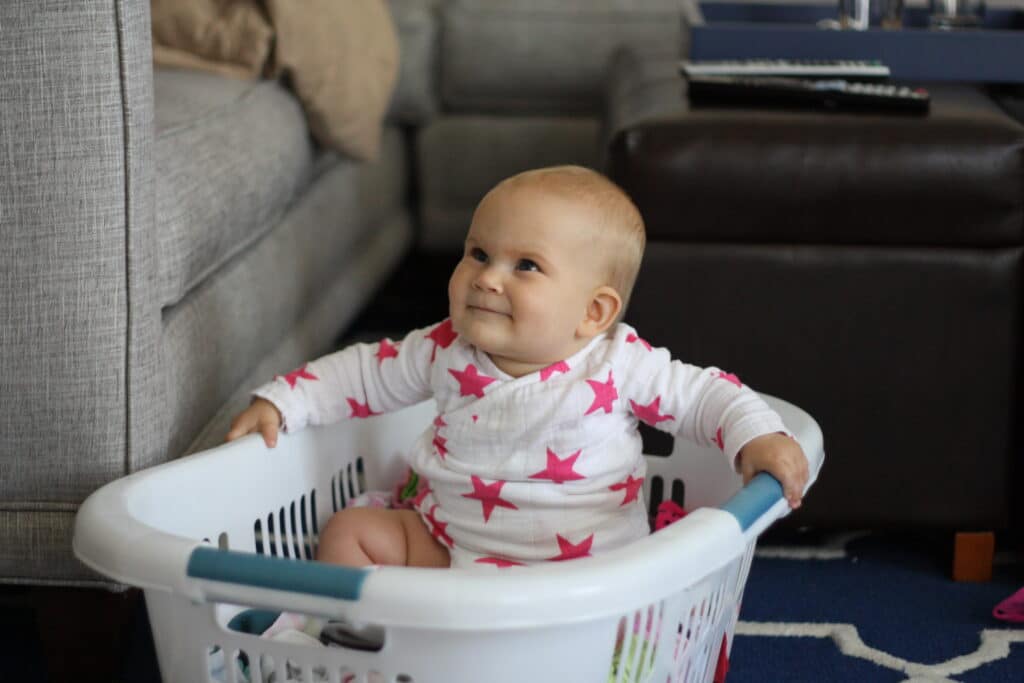4 Tips for Eco-Friendly Baby-Proofing in Your Home

 Why you can trust us
Why you can trust us
Founded in 2005 as an Ohio-based environmental newspaper, EcoWatch is a digital platform dedicated to publishing quality, science-based content on environmental issues, causes, and solutions.
If you have a baby on the way, you’ve got a million things on your mind. If it’s your first child, you may be feeling even more overwhelmed with the ever-growing checklist of things to prepare for the big birthday.
You know as soon as that day arrives, all eyes will be on the baby. So you may be wondering, is it even necessary to baby-proof my home?
The answer is yes.
Each year, 3.5 million children end up in the emergency room from injuries sustained at home.1 We know you’ll have a careful watchful eye on your baby, but there your house may have some hidden dangers and toxins you haven’t even thought about. So let’s look at some eco-friendly ways to baby-proof your home.
1. Fix What Needs Fixing
When only adults or older children are living in the house, it can be easy to put off big projects. You’ve learned how to ignore that crack in your glass door and the broken window seal.

Not anymore.
Now that you have a baby on the way, you need to make sure your home is as safe and comfortable as possible. Here are some things you’ll want to check.
- Walls: Do they have lead-based paint? If so, you’ll need to contact a professional lead paint removal company.
- Electrical: Any broken or exposed wiring? You’ll want to get that taken care of, especially if it’s in reach of small hands. Use outlet plug covers that cannot be removed easily.
- Windows: Replace windows and glass doors that are broken or can be easily opened. Also inspect blinds and window coverings for loose or dangling cords and secure them properly.
- HVAC: Upgrade any broken or outdated HVAC systems to ensure good air quality, adequate ventilation and proper temperature for your baby. If you’ve never had an energy audit, consider getting one to make your home more comfortable.
- Water heater: Fix the leaking water heater and make sure it’s set below 120 degrees Fahrenheit. This will not only avoid giving your baby a sizzling bath, but help keep them safe from burning themselves when they get old enough to start turning knobs.
- Detectors: Check and (if necessary) update smoke and carbon monoxide detectors.
2. Make a Room-By-Room List
It may be easiest to walk room by room and address areas that need some sustainable baby-proofing.
Kitchen
You don’t have to lock up every kitchen cabinet. After all, isn’t making a drum kit out of pots, pans and a wooden spoon a childhood rite of passage?

However, there are things that you should lock up or keep well out of reach of your baby. Here are a few ways to increase your kitchen safety:
- Put child-proof latches on cabinets and drawers that may include cleaning products, alcoholic beverages, sharp kitchen utensils or glassware.
- Keep plastic bags and aluminum foil out of reach.
- Put stove top burner covers on the knobs to prevent your baby from accidentally turning on the oven.
- Place non-slip pads under kitchen rugs to prevent slips.
Bathroom
Like the kitchen, there are many items in your bathroom that can quickly become hazardous in tiny hands. The best way to baby-proof your bathroom is to:

- Put cabinet latches to medicine and cleaning product cabinets.
- Add a lock to your toilet cover and make sure to keep it closed.
- Keep a thermometer on hand to measure the bath temperature. Aim for a temperature around 100 degrees Fahrenheit.
- Keep cosmetics, mouthwash and soaps out of reach.
- Lock razors, scissors, tweezers and any other sharp objects in a latched cabinet.
Bedroom or Nursery
When you picture a bedroom, you think about the soft bed covered in plush pillows. What could go wrong?
Unfortunately, several things, if you’re not careful. Here are some tips for baby-proofing the nursery and bedroom.
The Crib
- Keep your baby’s crib free of heavy blankets, pillows or stuffed animals that increase the risk of suffocation.
- Choose a sustainably-sourced crib that’s certified safe with a Juvenile Products Manufacturing Association label and has slats no more than 2 ⅜ inches apart.
- Check the Consumer Product Safety Commission’s recall list before purchasing a crib.
- The crib mattress should be firm and fit snugly. You shouldn’t be able to fit more than two fingers in between the mattress and the crib.
- Choose certified organic cotton sheets.
- Keep the crib away from windows, heaters, lamps, wires or wall decorations that could fall into the crib (even stick-on decals).
Toys and Furniture
- Choose age-appropriate toys and decor free of small objects, toxins and plastics.
- Don’t install anything hanging low over the crib or changing table that can fall or be pulled down.
- If you have a toy box for storage, make sure it has soft-close hinges and hinge guards to avoid injury.
Laundry Room
Another unsafe place for babies can be the laundry room (or laundry closet, for those of us who don’t have the luxury of a dedicated laundry room). If laundry detergent pods were enticing enough for teenagers to eat, imagine how attractive they’ll seem to a baby.

Here are a few ways to baby-proof your laundry area:
- Put a child lock or a sock on the laundry room door.
- Store laundry products behind a locked cabinet or high out of reach.
- Use eco-friendly laundry detergent with non-toxic ingredients so that if your child does get their hands on it, they won’t be at risk of ingesting dangerous chemicals.
- Anchor your washer and dryer and keep the doors locked.
Living Room
Aside from the nursery and bedroom, this is probably where your baby is going to spend the most time. Make your living room a safe space for your baby by doing the following:

- Make sure all hard edges and corners are covered by soft materials. (Check out the DIY ideas below for how to do this by upcycling things you have at home.
- Make sure all electrical cables are bundled. Use electrical cord sleeves or make your own using tube socks or a scarf.
- Switch to cordless window blinds or tie up your cords so they’re out of reach.
3. DIY Baby-Proofing Ideas
There are plenty of baby-proofing items on the market, but many are made from non-sustainable foam or plastic and will likely get thrown away once your baby turns into a child.

To avoid unnecessary plastic use and waste, try making some DIY baby-proofing items with things you already have at home. Here are some ideas:
- Tie rubber bands around the cabinet and drawer handles to keep them shut.
- Use socks around burners and doorknobs.
- Cut a tennis ball to fit over sharp counter corners.
- Use a pool noodle or fabric to soften table and counter edges.
- Use a tube sock as a cable sleeve.
- DIY an outlet cover using Tupperware (see photo below).
4. Make Sustainable Purchases For Your Child
Switching to non-toxic home goods is not only an environmentally-conscious choice, but safer for the well-being of your baby and family.
Hundreds of thousands of children are sent to the hospital each year for injuries related to household cleaning products.2 You can also make safe cleaning concoctions using non-chlorine bleach, vinegar and baking soda.
Fortunately, as sustainability has become more mainstream, there are also several companies that you can trust for organic and ethically-sourced products. Here are some of our favorites:
The Honest Company
The Honest Company makes a variety of multi-products and minimal waste products that are toxin-free. You can find household cleaners, baby diapers, wipes and soaps for the whole family.
Modern Nursery
Still decorating and baby-proofing the nursery? Check out the eco-friendly line from Modern Nursery. The company has designed organic baby gear free of toxic chemicals and pesticides. You can find anything you need for your baby, from eco-friendly furniture and bedding to high chairs, strollers and car seats.
All of the products featured on their page are made by companies that do their part to reduce waste, use reclaimed materials and safe, green products.
Bella Tunno
Bella Tunno is a women-owned, certified B-Corp that makes safe toys, teething gear, plateware and more for your baby. All of its products are 100% compliant with the Consumer Product Safety Improvement Act (CPSIA). As an added bonus, you can feel good about supporting Bella Tunno because for every product sold, the company donates one meal to a child in need.
Subscribe to get exclusive updates in our daily newsletter!
By signing up, you agree to the Terms of Use and Privacy Policy & to receive electronic communications from EcoWatch Media Group, which may include marketing promotions, advertisements and sponsored content.

 233k
233k  41k
41k  Subscribe
Subscribe 




